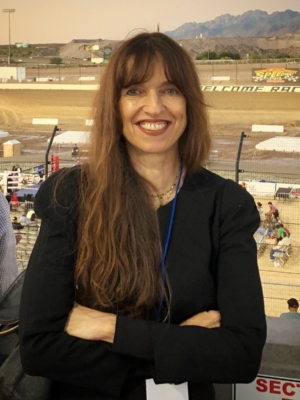Writing: The Toolbox V
A writer who waits for ideal conditions under which to work will die without putting a word on paper. E.B. White
One of the greatest challenges of the writing process is not the writing itself, but the inception, the starting, the beginning of writing: sitting in a chair on a new day to write a new page, a new story, essay, or script.
Writing takes concentration and immersion. The battle against procrastination rages daily; the resistance to take the plunge is constant, the hesitation before the leap almost inevitable. The private hell of the writer is the unsung heroic quest. How can it be explained just how much grit it took to resist the urge to check emails or “like” another dog on Facebook? There is no medal of honor for the uncommon valor of tackling the uncertainty and doubt of the new day of writing. But there are a few tools that can help along the way. I continue my series writing about the collected tools of the craft, based on my long-standing experience of writing screenplays and books.
13. Take Your Time
At the beginning of a writing a project, there is that slow burn that wants to take its time, before it develops into a raging fire. I don’t worry about fanning the fledgling embers at first. It’s important to protect the new creative process. Too much air will extinguish the young flame of inspiration. Every change requires adjustment. I am not concerned about the page count on the first few days during which I’m just getting my bearings. I need to feel the world, immerse and go under first, before major strides can be made. I build in time for smoldering. I research and dream and think and feel the characters and their stories before they begin to inhabit me. When characters start talking by themselves, I know I have finally entered the world and am in that zombie dream state. I will vehemently fight to stay there until the end. Once the pictures and dialogue come effortlessly, I know the path has opened up before me, and all that remains is to scale the mountain to the top. Before I’m comfortable and acclimated, I don’t push myself into frustration. I just let the writing catch its flow.
14. The Daily Page Count
I am an immersion writer. In order to write, I have to dive deep into the material. And in order to stay focused and keep the words flowing, I have devised one trick that works for me: page counts. I like numbers. I like page numbers and word counts—numerical trickery for the mind. Like mile markers that show your slow progress to your destination, I watch the pages and words and take heart that, despite the arduous climb, there is progress being made and the distance keeps shrinking. Every morning, I set a goal for that day’s page count. When I write screenplays, that daily number is usually twelve pages. When I write a book, the number is fifteen or twenty. The number is arbitrary and varies with each project, it could be a five hundred word article, or a five page essay—as long as there is a goal. I might not always reach that goal or I might write beyond it, but the goal helps me gauge how I’m progressing throughout the day, and gives me a feeling of satisfaction that inspires me to write the next day. The daily page count means I don’t stop until I’ve reached my goal. I will write from morning until midnight if necessary, to get it done. There’s a great deal of satisfaction in having met my goal for the day. It keeps me going and that is what matters most.
15. Outline
This is a controversial one. There are many writers who don’t like to outline, never outline, or begin writing to find the story as they go. I’m not one of them. I don’t like to outline, but there are many reasons why I do like to have an outline—one that is as detailed as possible—to guide me through the writing process and keep me on track. I write many stories that are based on true stories set in real life, for instance, and it is imperative for me to know what parts of real life are being kept for the narrative, and which are being omitted. I also usually have to write fairly quickly under a deadline, and the outline saves a lot of time. Writing with an outline, even when that outline might change, cuts down on a lot of doubt and anxiety. It keeps the narrative on course and forces me to conceive of my story before I even begin to write, which includes developing my themes, metaphors, and meaning. My outlines will contain a numbered list of all my planned scenes, details about character motivations, intentions and feelings within those scenes, details about the locations and settings of each scene, and the dramatic progression which sets up the narrative for the next scene. I’ve seen many young screenplay writers end up having to re-conceive their scripts once they reached the third act because they found the set-up wasn’t working and they had written themselves into a corner. It could have been avoided by looking at the big picture. The creative process is something to nurture. Find tricks to keep it going from day to day. Don’t force it, let it flow. And consider having an outline, as it might minimize the doubt and maximize the output.
Previous posts in the series:
https://lunchticket.org/writing-toolbox/
https://lunchticket.org/writing-toolbox-ii/
https://lunchticket.org/writing-the-toolbox-iii/
https://lunchticket.org/writing-the-toolbox-iv/
All images courtesy of Bettina Gilois
Bettina Gilois is a Los Angeles based writer whose screen credits include the Bruckheimer film “Glory Road,” for which she was nominated for the Humanitas Prize, as well as “McFarland, USA” starring Kevin Costner, and the HBO movie “Bessie” starring Queen Latifah for which she received an Emmy Nomination for Outstanding Writing. Her book, “Billion Dollar Painter” for Weinstein Books, came out in 2014. She is a special contributor for the Huffington Post in Arts and Culture, and has been a professor of screenwriting at Chapman University, St. John’s College Film Institute in Santa Fe, and now Hofstra University’s Herbert Lawrence School of Communications in NY.










